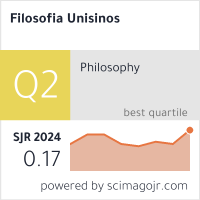In praise of Sorensen’s ‘blockage theory’ on shadows
DOI:
https://doi.org/10.4013/fsu.2018.192.07Abstract
In his famous book Seeing Dark Things: The Philosophy of Shadows (2008), Roy Sorensen put forward a ‘blocking theory of shadows’, a causal view on these entities according to which a shadow is an absence of light caused by blockage. This approach allows him to solve a quite famous riddle on shadows, ‘the Yale puzzle’, that was devised by Robert Fogelin in the late 1960s and that Sorensen presents in the form mentioned by Bas van Fraassen (1989). István Aranyosi has recently criticized Sorensen’s solution to the Yale puzzle, on the grounds that it does not resist another version of the riddle, that Aranyosi calls ‘the Bilkent puzzle’. A new perspective on shadows, the ‘Material Exstitution View’, that allegedly permits to solve both puzzles, could be adopted as an alternative. In this paper I will show that Sorensen’s blockage theory can actually handle both the Yale and the Bilkent puzzle, plus another one that I put forward (‘the donut puzzle’), which instead is fatal to Aranyosi’s position. As Sorensen puts it, nothing aside from the original blockage of light is needed.
Keywords: Aranyosi, blockage theory, material exstitution view, shadow, Sorensen, Yale puzzle.
Downloads
Downloads
Published
How to Cite
Issue
Section
License
I grant the Filosofia Unisinos – Unisinos Journal of Philosophy the first publication of my article, licensed under Creative Commons Attribution license 4.0 (which allows sharing of work, recognition of authorship and initial publication in this journal).
I confirm that my article is not being submitted to another publication and has not been published in its entirely on another journal. I take full responsibility for its originality and I will also claim responsibility for charges from claims by third parties concerning the authorship of the article.










